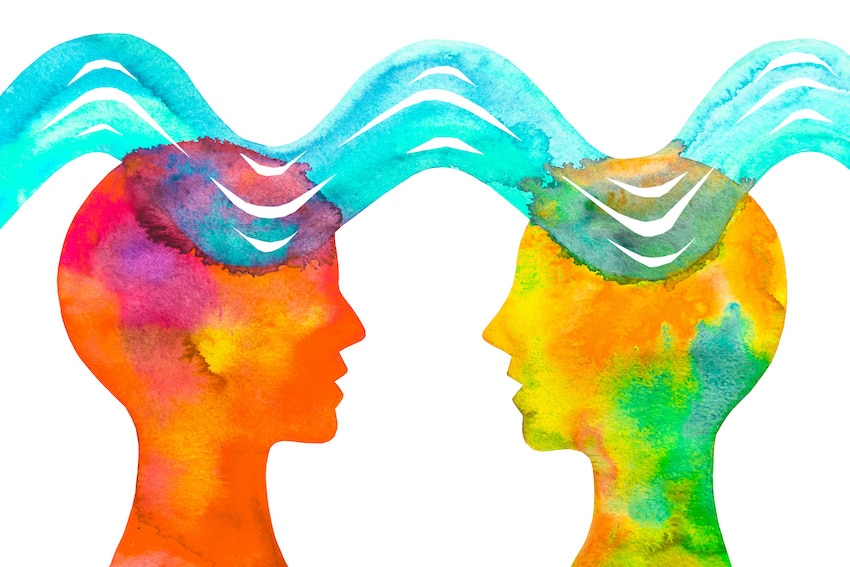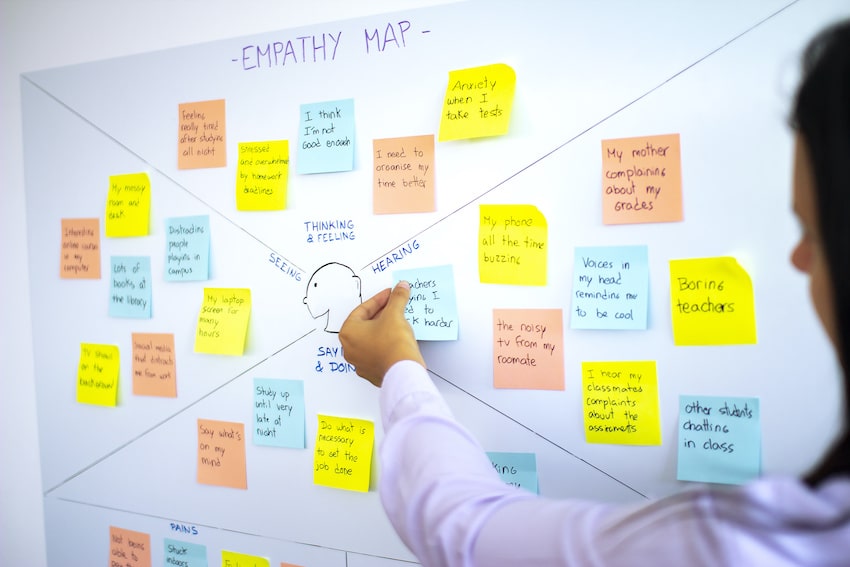Customer Empathy Will Make You a Stronger Leader
2020 has been our worst nightmare to-date, with its dose of the pandemic, natural disasters, economic destruction, and increasing political tensions worldwide. Yet, despite all this horror, we start to see an emerging trend, a silver lining: 2020 will also be remembered as the year of empathy.
There are many definitions of empathy, but my preferred one is:
“The ability to walk in someone else’s shoes.” In other words, understanding where they’re coming from, their value system, what’s influencing them, their aspirations…
No need to agree with your findings, but the more you can build a 360-degree view of the person you want to understand, the better.
I’m no neuroscientist and only have hands-on experience in human psychology. But, over my years, as a product and business leader, I’ve learned to practice empathy, starting with customers. Getting into their minds, understanding their “big hairy problems” has been essential. Thanks to empathy, our teams built products that solved real problems our customers deeply cared about.
Here’s a quick overview of how we’ve leveraged empathy to increase our chances of success with customers. The good news is that once you’re becoming good at it, empathy will serve you well in all aspects of your life, from work with your colleagues, to home with your family and friends.
Fundamentals of empathy with your customers

Let me debunk a few myths about empathy.
First, can you learn to become more empathetic, or were you born that way? Just look around you! The world could always be a better place. Still, every tragedy reminds us that we’re wired with sociability and attachment to others at the core. Fundamentally, we are a social animal who wants to connect and understand others!
Second, empathy is not a nice-to-have. It is actually the foundation for a long-lasting relationship with your customer. Done well, it will bring you the insights needed to optimize customer lifetime value. Empathy will help you demonstrate you are genuinely interested in understanding them. It will lead you to innovate so you can keep these customers happy and loyal over time.
Third, empathy is not a “touchy-feely” soft skill only used by highly sensitive people. It is a crucial leadership foundation that will make you a better listener, a stronger communicator, and a more respected brand. By listening intently, you create a safe environment for customers to share more with you. Soon enough, you’ll have a gold mine of insights you can then use in a variety of areas. It impacts everything, from product requirements, positioning, and messaging to how you address every touchpoint with your customers.
Create an environment for high-quality, one-to-one interactions

Trying to get into your customer’s mind is no easy task. Still, if you create the right environment for your interaction, you’ll have a solid foundation. Forget focus groups and online surveys! Use rich one-to-one interactions instead. Please note I did not say “interviews.” If you only interview, you’re missing on two other vital dimensions: observation and immersion.
So, as a rule, make sure you meet your customer where they’re using your product or service. If social distancing makes it more challenging, you can still interact and observe in-person. As an example, my team once needed to better understand the trucker’s experience. We were designing special headsets for that category. They ended up spending hours at a truck stop in Watsonville, California, another safe outdoor setting for rich interactions during pandemic times!
And if physical presence is simply not possible, do it virtually. Video calls, screen-sharing, log files will help you there. You can even send in advance your physical products or mockups and observe the user experience from a distance.
Another rule is to ensure you prepare appropriately for such rich interactions, but here’s a warning: don’t come up with a strict script. Make it as organic as possible. Be clear on some hypotheses you will want to test through your interaction. Identify the right ways to get started and stimulate the sharing by preparing some visuals, simulations, or even other customer statements. Most importantly, be ready for (insightful) surprises. A successful interaction will be when your customer is openly and freely sharing what’s on their mind. So, how should you handle it?
Practice the art of open-ended questions like Inspector Columbo

As highlighted in a previous article, I’ve always been fascinated by the crime drama television series starring Peter Falk as Inspector Columbo! He is a perfect example of a great detective. He surely knows how to use empathy with everyone from the witnesses, victims to the murderers! One of the core skills great detectives develop is in asking non-leading, open-ended questions.
To better understand your customer’s experience, put yourself in their shoes! You need to obtain an un-biased detailed description of your customer’s experience. Ask questions like “Tell me about your typical day,” and then let them articulate the story their way! If they’re stuck, ask them, “Tell me more” or “Describe it to me. “
Questions based on “What” and “How” can be very useful. A few examples include: “Tell me what happened – What if… – How did you feel about this?”. Avoid asking directly “Why.” With “Why,” you ask for rationalization. Still, you also open a floodgate that can be reminiscent of a muscled police interrogation.
The detailed descriptions and stories you hear directly from your customer will help immerse yourself into their described experience. Be a great detective, take solid notes, and don’t try to reach an early conclusion yet. Gather all your facts first.
Act on your findings in a collaborative way

Product management, user experience, marketing; no matter which function drove these rich interactions, make sure the next steps are not handled in a vacuum. Once you have enough to reflect from (in most cases, 15 to 20 will be enough), it’s time to share across the right teams. You can then collaborate effectively and build the best answer to the identified problems.
Multiple tools and techniques can be used. It will depend on your product type and which functions are to be involved. Just make sure you end up presenting your findings the way customers truly experienced them. A useful technique for this is creating empathy maps.
The empathy map was initially created by Dave Gray and has grown in popularity in the past few years. In essence, it’s a collaborative tool that will ensure different teams share the same understanding of where the customer stands. You typically work by customer segment and articulate what they say, feel, think, or do. Just do your homework upfront through rich interactions. And, you will have a solid view of how to address real customer problems.
In conclusion
Customer empathy alone is not enough. Yet, combined with other traits like critical thinking and discipline, it will help you build better products.
As a result, it will establish your business, your brand, as the most relevant in your customers’ minds. Like other critical traits, empathy will also make you a more credible leader as you apply it across the board and not only with your customers.
If you want to master customer empathy and build long-lasting product success, check out our latest “Customer Insights Matter” Sprint Course. It will teach you key strategies and techniques to truly capture what’s on your customers’ minds. You can go at your own pace and micro-learn if need be, but you should be ready to act on your learnings in typically less than half-a-day.
If you need a more tailored approach and customize it to your specific situation, let’s talk (drop us a note, or schedule a free exploratory call).
